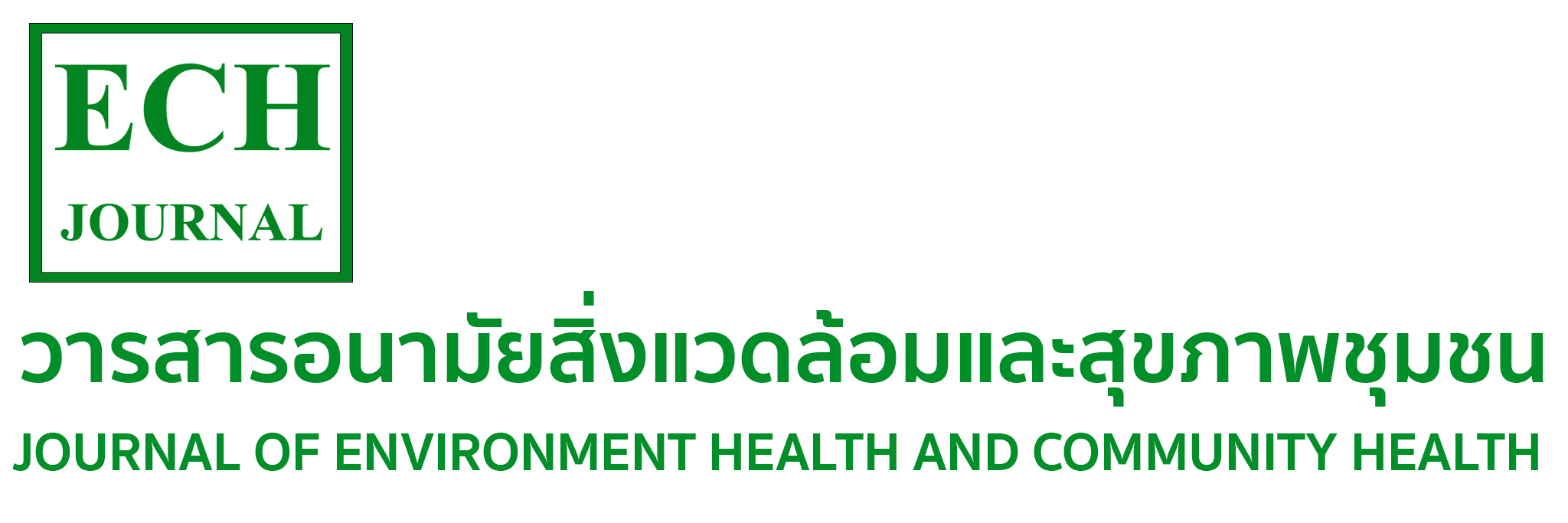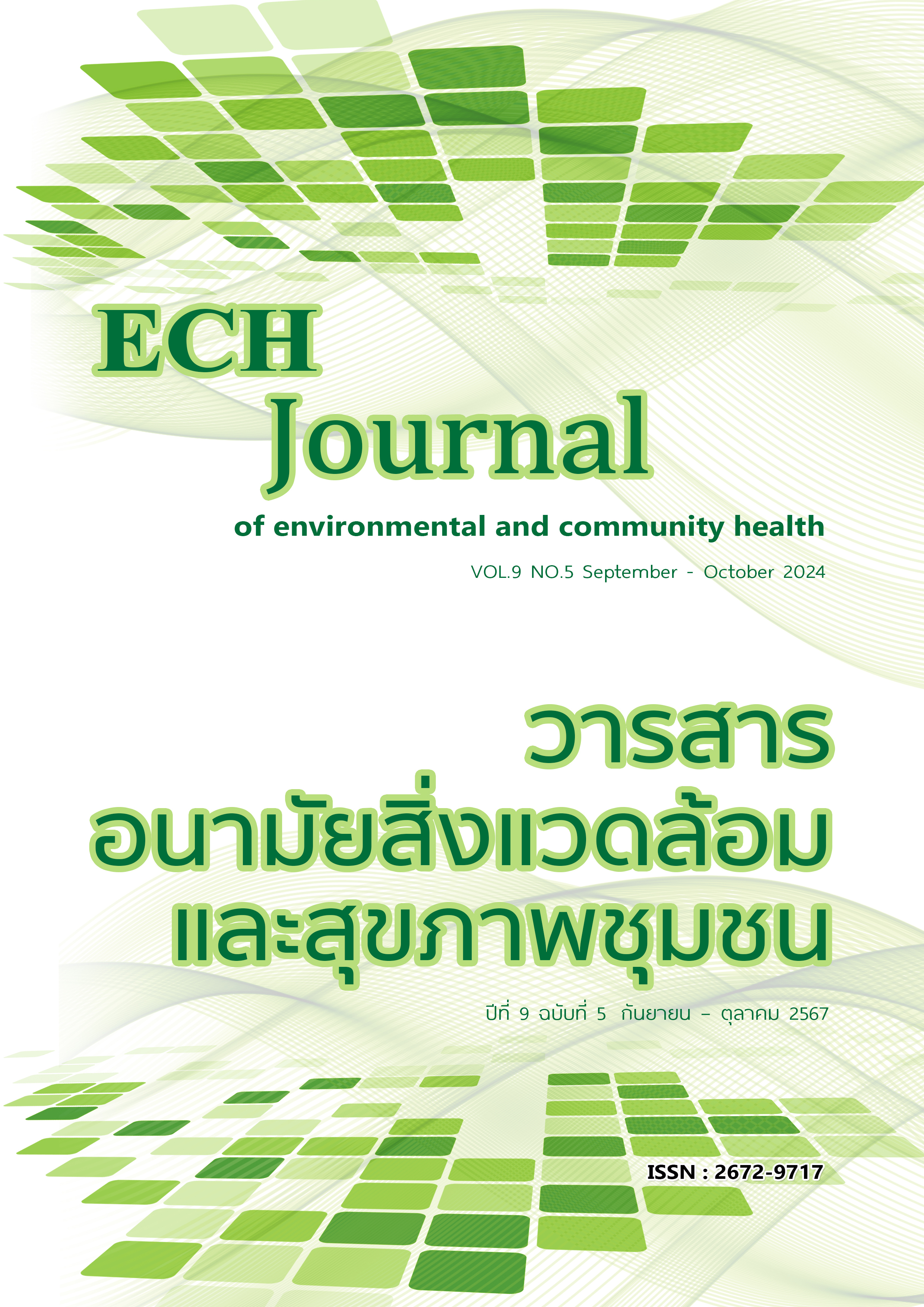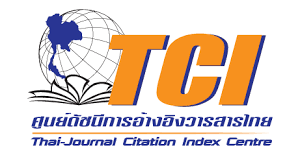การวิเคราะห์การรอดชีวิตและความสัมพันธ์ระดับความรุนแรงของการบาดเจ็บต่อการจัดการภาวะฉุกเฉินและผลลัพธ์ทางการแพทย์ในผู้ป่วยอุบัติเหตุทางจราจร โรงพยาบาลสามชัย จังหวัดกาฬสินธุ์
คำสำคัญ:
อุบัติเหตุทางจราจร, การวิเคราะห์การรอดชีวิต, การจัดการภาวะฉุกเฉินบทคัดย่อ
การวิจัยนี้มีวัตถุประสงค์เพื่อ 1) วิเคราะห์อัตราการรอดชีวิตและปัจจัยที่มีผลต่อการรอดชีวิตของผู้ป่วยอุบัติเหตุทางจราจรที่เข้ารับการรักษาในโรงพยาบาลสามชัย จังหวัดกาฬสินธุ์ และ 2) ศึกษาความสัมพันธ์ระหว่างระดับความรุนแรงของการบาดเจ็บต่อการจัดการภาวะฉุกเฉินและผลลัพธ์ทางการแพทย์ วิธีดำเนินการวิจัยเป็นการศึกษาเชิงวิเคราะห์แบบย้อนหลัง โดยรวบรวมข้อมูลผู้ป่วยอุบัติเหตุทางจราจร 96 ราย ที่เข้ารับการรักษาในโรงพยาบาลสามชัย ระหว่างเดือนตุลาคม 2566 ถึงกรกฎาคม 2567 จากฐานข้อมูลการเฝ้าระวังการบาดเจ็บ วิเคราะห์ข้อมูลด้วยวิธี Kaplan-Meier Survival Analysis, Cox Proportional Hazards Model และ Pearson's correlation coefficient
ผลการวิจัยพบว่า ผู้ป่วยส่วนใหญ่เป็นเพศชาย (ร้อยละ 84.21) อายุเฉลี่ย 32.42 ปี มีคะแนน ISS เฉลี่ย 7.84 และ RTS เฉลี่ย 3.38 ระยะเวลาการรอดชีวิตเฉลี่ย 28.422 วัน โดยมีอัตราการรอดชีวิตสูงกว่าร้อยละ 90 ปัจจัยด้านอายุ เพศ และระดับความรุนแรงของการบาดเจ็บไม่มีผลต่อการรอดชีวิต, ความรุนแรงของการบาดเจ็บ (ISS) มีความสัมพันธ์เชิงบวกกับการให้เลือดและการดามส่วนของร่างกายที่เหมาะสม แต่มีความสัมพันธ์เชิงลบกับการให้สารน้ำหรือยาทางหลอดเลือดที่ไม่เหมาะสม ส่วน ความรุนแรงของการบาดเจ็บ (RTS) มีความสัมพันธ์เชิงบวกกับการให้เลือดอย่างเหมาะสมและการเกิดภาวะแทรกซ้อน
เอกสารอ้างอิง
กรมควบคุมโรค. รายงานสถิติอุบัติเหตุทางถนนในประเทศไทย. กรุงเทพมหานคร: กรมควบคุมโรค; 2567.
World Health Organization. Global status report on road safety. Geneva: World Health Organization; 2023.
American College of Surgeons. Advanced Trauma Life Support (ATLS®): The ninth edition. Chicago: American College of Surgeons; 2022.
ถาวร ทองเพชร, วิชยาพร ทองเพชร. ปัจจัยที่มีผลต่อการรอดชีวิตในผู้ป่วยอุบัติเหตุจราจร. วารสารการแพทย์และสาธารณสุข. 2562;2(4):75-86.
อนันต์ศักดิ์ จันทรศรี, คณะ. การรอดชีวิตของผู้ป่วยอุบัติเหตุในโรงพยาบาลกรุงเทพ พัทยา. วารสารการแพทย์และสาธารณสุข มหาวิทยาลัยอุบลราชธานี. 2563;3(1):55-66.
Thongpitak Huabbangyang, et al. Survival Rates and Factors Related to the Survival of Traffic Accident Patients Transported by Emergency Medical Services. Open Access Emerg Med. 2021;13:575-586. doi:10.2147/OAEM.S344705.
Tovkach M. Survival analysis in trauma patients: A rural hospital perspective. J Rural Health. 2020;36(1):43-52.
Freedman DA. A note on screening regression equations. Am Stat. 1982;36(2):152-155.
กรมควบคุมโรค. คู่มือการใช้แบบบันทึกข้อมูลเฝ้าระวังการบาดเจ็บ ฉบับที่ 7. กรุงเทพฯ: กระทรวงสาธารณสุข; 2566.
Salehi O, Tabibzadeh Dezfuli SA, Namazi SS, Dehghan Khalili M, Saeedi M. A New Injury Severity Score for Predicting the Length of Hospital Stay in Multiple Trauma Patients. Trauma Mon. 2016;21(1). doi:10.5812/traumamon.20349.
Miclau TA, Torres-Espin A, Morshed S, Morioka K, Huie JR, El Naga AN, et al. Appendicular Fracture and Polytrauma Correlate with Outcome of Spinal Cord Injury: A Transforming Research and Clinical Knowledge in Spinal Cord Injury Study. J Neurotrauma. 2022;39(15-16):1030-1038. doi:10.1089/neu.2021.0375.
Terayama T, Toda H, Nagamine M, Tanaka Y, Saitoh D, Yoshino A. Association between length of hospital stay and fractures in the spine, pelvis, and lower extremity among patients after intentional fall from a height: an analysis of the Japan Trauma Databank. Trauma Surg Acute Care Open. 2023;8(1). doi:10.1136/tsaco-2022-000988.
Kalbas Y, Lempert M, Ziegenhain F, Scherer J, Neuhaus V, Lefering R, et al. A retrospective cohort study of 27,049 polytraumatized patients age 60 and above: identifying changes over 16 years. Eur Geriatr Med. 2022;13(1):233-241. doi:10.1007/s41999-021-00546-9.
Tsai C-H, Wu M-Y, Chien D-S, Lin P-C, Chung J-Y, Liu C-Y, et al. Association between Time to Emergent Surgery and Outcomes in Trauma Patients: A 10-Year Multicenter Study. Medicina (Kaunas). 2024;60:960. doi:10.3390/medicina60060960.
Amare AT, Tesfaye TD, Ali AS, Woelile TA, Birlie TA, Kebede WM, et al. Survival status and predictors of mortality among traumatic brain injury patients in an Ethiopian hospital: A retrospective cohort study. Afr J Emerg Med. 2021;11(4):396-403.
doi:10.1016/j.afjem.2021.06.003.
Clark TG, Bradburn MJ, Love SB, Altman DG. Survival analysis part I: basic concepts and first analyses. Br J Cancer. 2003;89(2):232-238. doi:10.1038/sj.bjc.6601118.
Lee E, Wu J, Enriquez J, Martin J, Craig M. Advanced Automatic Collision Notification Research Report (Report No. DOT HS 812 729). Washington, DC: National Highway Traffic Safety Administration; 2019. Available from: https://rosap.ntl.bts.gov/view/dot/40997/dot_40997_DS1.pdf.
ScienceDirect. One-year mortality rate after osteoporotic hip fractures and associated risk factors in Thailand. 2015. Available from: https://www.sciencedirect.com/science/article/pii/S2405525515000072.
SEAMEO TROPMED Network. Long-term survival of ischemic and hemorrhagic stroke patients in a Thai population. 2018. Available from: https://www.tm.mahidol.ac.th/seameo/2018-49-2/16-7353-9-322.pdf.
Indurkar S, Ghormade P, Akhade S, Sarma B. Use of the Trauma and Injury Severity Score (TRISS) as a Predictor of Patient Outcome in Cases of Trauma Presenting in the Trauma and Emergency Department of a Tertiary Care Institute. Cureus. 2023;15. doi:10.7759/cureus.40410.
Verma D, Kumar N, Jain A, Gouda B, Kumawat S. Comparative evaluation of revised trauma score and injury severity score as prognosis predictor among polytrauma patients. Arch Trauma Res. 2021;10:59-63. doi:10.4103/atr.atr_54_20.
Zeid A, Ahmed A, Ahmed R, Ezzat A. Comparison of Injury Severity Score, Glasgow Coma Scale and Revised Trauma Score in Predicting the Outcome in Young Patients with Trauma Attending Emergency Department of Suez Canal University Hospitals. Asian J Med Health. 2022;20(11):1756. doi:10.9734/ajmah/2022/v20i11756.
Gwaram U, Ihezue C, Onche I. Assessing the severity of injury using the revised trauma score in a tertiary institution in North-Central Nigeria. Niger J Basic Clin Sci. 2013;10:3. doi:10.4103/0331-8540.117230.
Hui L, Weifeng S, Yuefeng M, Weiqiang C, Xiaojun H, Junsong W, et al. Value of trauma and injury severity score in predicting mortality of trauma patients in different rank hospitals. Chin J Trauma. 2012;28:444-448. doi:10.3760/CMA.J.ISSN.1001-8050.2012.05.017.





